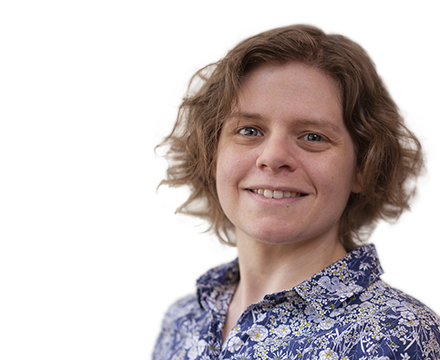This July, I got to experience my first deep-dive into Drupal culture by attending Drupal Camp Asheville 2020. Thanks to COVID, I didn’t get to enjoy the full retreat-to-the-mountains, hang-out-with-fellow-Drupalers experience, but I could feel the sense of community and kinship even through the virtual version of the conference. The Camp organizers were undaunted in making sure the annual event was a success, even if achieved differently than in prior years. I was excited to be a part of the event and to become more familiar with Drupal (since I’m a developer with more of a WordPress-y background); I was delighted to find that the conference catered to established Drupalers and Drupalers-to-be with skills and familiarity levels that ran the gamut from noob to pro.
Some of the biggest takeaways for me came from the sessions on accessibility and productivity.
Prioritizing Accessibility
Carie Fisher challenged participants to stretch their understanding of what makes an accessible visual experience and reminded us that blindness is not the only visual impairment that users may have in her talk “Accessible Images When It Matters Most.” In addition to alt-tags (or equivalent) for informative graphics, other considerations like image type, color & contrast, typography & layouts, and copy & icons should be in the mix. Users with blindness rely on concise, descriptive, and relevant tags for images, but people with cataracts or color blindness need visuals with appropriate color contrasts. People with attention deficits and learning difficulties benefit from linear image/content layouts, as well as text content supported by contextual, easy-to-understand icons when appropriate. Content creators should take care in composing content that’s free of jargon, ambiguities, and complex words, and strive to convey content as simply and plainly as possible. Designers should choose fonts that have distinct character designs in that each character may be easily identified (think I [uppercase “i”] vs l [lowercase “L”] vs 1 [the number “one”] or B [uppercase “b”] vs 8 [the number “eight”]). To help achieve these accessibility goals, Carie recommended a few helpful tools:
- NoCoffee browser plugin (Chrome & Firefox) that simulates various vision impairments.
- Colour Contrast Anaylser for checking color contrast ratios against WCAG standards.
- The Readability Test and Readable to check content for ease of readability
Donna Bungard continued the accessibility discussion with a non-conventional perspective in her talk “Be an Accessibility Anti-Hero.” While creating accessible content is just the right thing to do, it also makes business sense to prioritize accessibility. Her key phrase “accessibility is not charity” pretty much summed it up; people with accessibility challenges don’t need a “hero,” rather they want usable sites that enable them to achieve their goals (including purchasing goods and services), or in other words, the exact same thing that non-disabled site users expect from a website. She indicated that “US consumers with vision loss have an estimated $175 billion of disposable income” and that “2% of total eCommerce transactions are conducted by people who are blind”; online experiences that don’t meet the needs of vision-impaired people could result in abandoned landing pages and shopping carts, lost conversions, and therefore lost potential revenue. Designing web experiences for people who are blind or deaf will also positively impact SEO rankings, since search engines cannot see designs or hear sound effects–content that’s easily understood and clear should be the driver. Proactively including different disabilities in user personas (the Cornell University Disability Statistic Tool can assist in building those personas) can help to “build accessibility into business strategy”; training teams for empathy (not only to clients/potential clients and partners, but also to other team members) can help build a culture of acknowledging situations where accessibility can be improved.
Discovering Productivity/Life Hacks
As an added bonus to the Drupal development and accessibility training sessions, Tearyne Almendariz discussed a number of practical tools that can make everyday life simpler in her talk “Automate Your Life - Personal and Professional”. Tearyne insisted that “decision fatigue is a real thing” and contended that creating a habit loop (particularly one that relies on automation) can reduce the number of decisions a person has to make in a day and can prevent general fatigue and preserve energy. In the home, technology like smart assistants (Google Assistant, Siri, Alexa) combined with smart power adapters and lights (her example being the TP-Link Kasa) can help streamline morning and evening routines. Tools like Freedom help limit distractions by gently blocking time-wasters (like social media and other user-defined sites) during key hours of the day. The Waze App has a helpful feature of alerting users of the right time to depart for a location to be on time when synced with a calendar, and IFTTT (if this then that) coordinates behaviors/actions between apps (such as generating emails based on app behavior/tasks). In a more professional setting, Tearyne demonstrated the usefulness of linking Slack with other services such Google Calendar, Jira and GitHub. Combining IFTTT, GitHub, and Todoist (which creates a new Todoist task when a new GitHub issue is assigned). She also is a strong proponent of Zapier to automate workflows. She did caution that alerts (via push notification, Slack, etc), when used too heavily, will become burdensome and overwhelming and should be used thoughtfully.
Summary
My first experience at Drupal Camp Asheville was packed with practical Drupal tips, reminders, and guidance about accessibility and even some useful lifestyle ideas that I’m looking forward to exploring. I’m glad to have had my first foray into the Drupal community and look forward to getting better acquainted with more Drupalers across the country to sharpen skills and build relationships. Hopefully next time, we’ll get to hang out and learn together in the beautiful North Carolina mountains and enjoy some Standard Pizza.



Add new comment